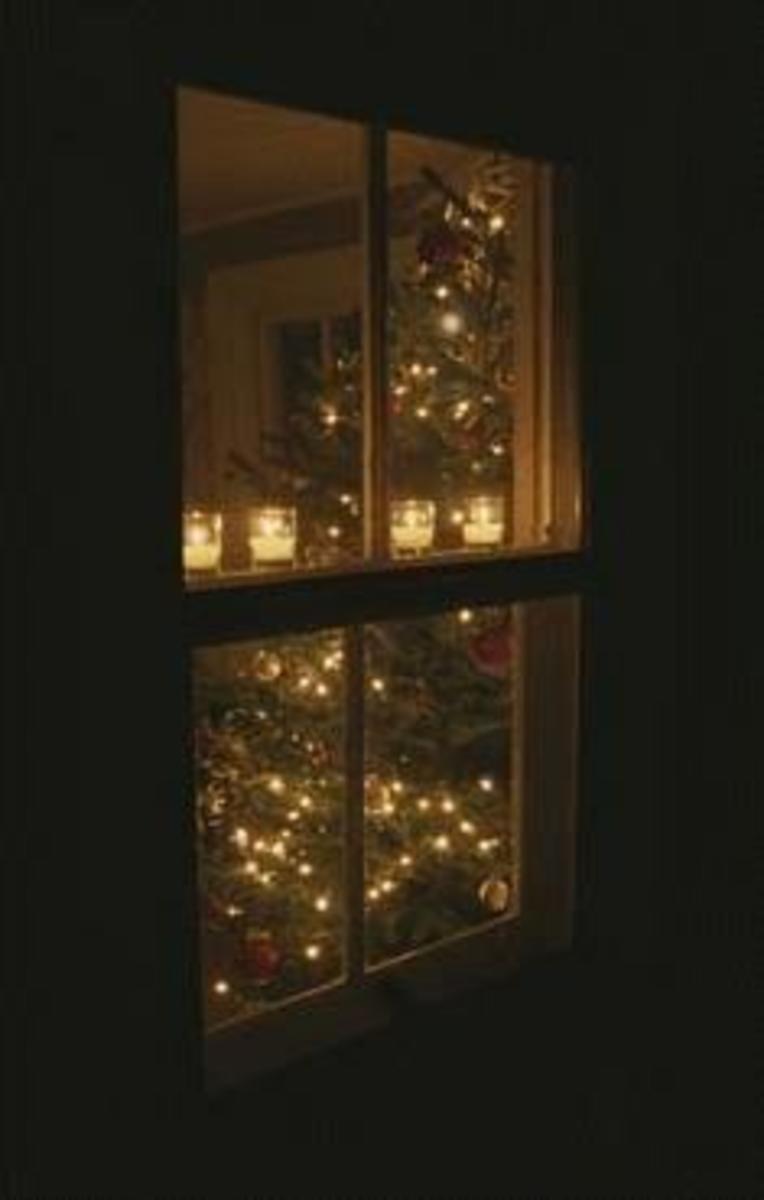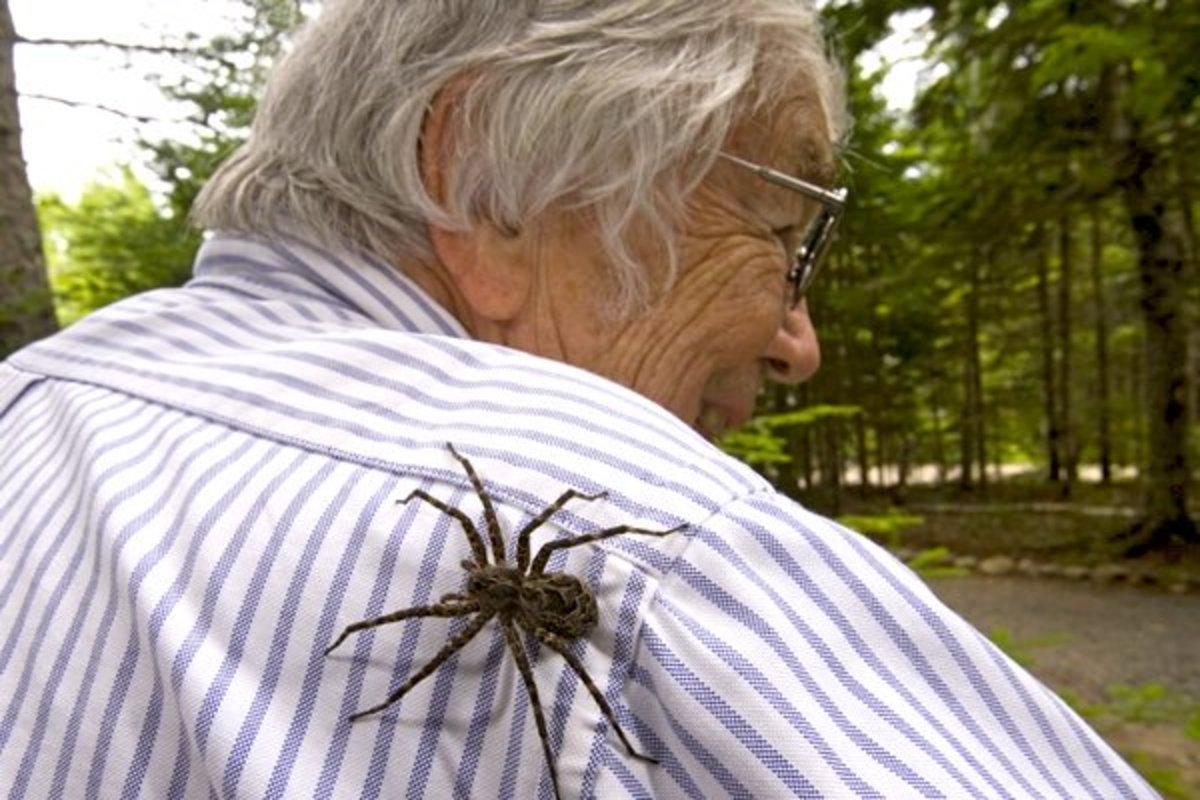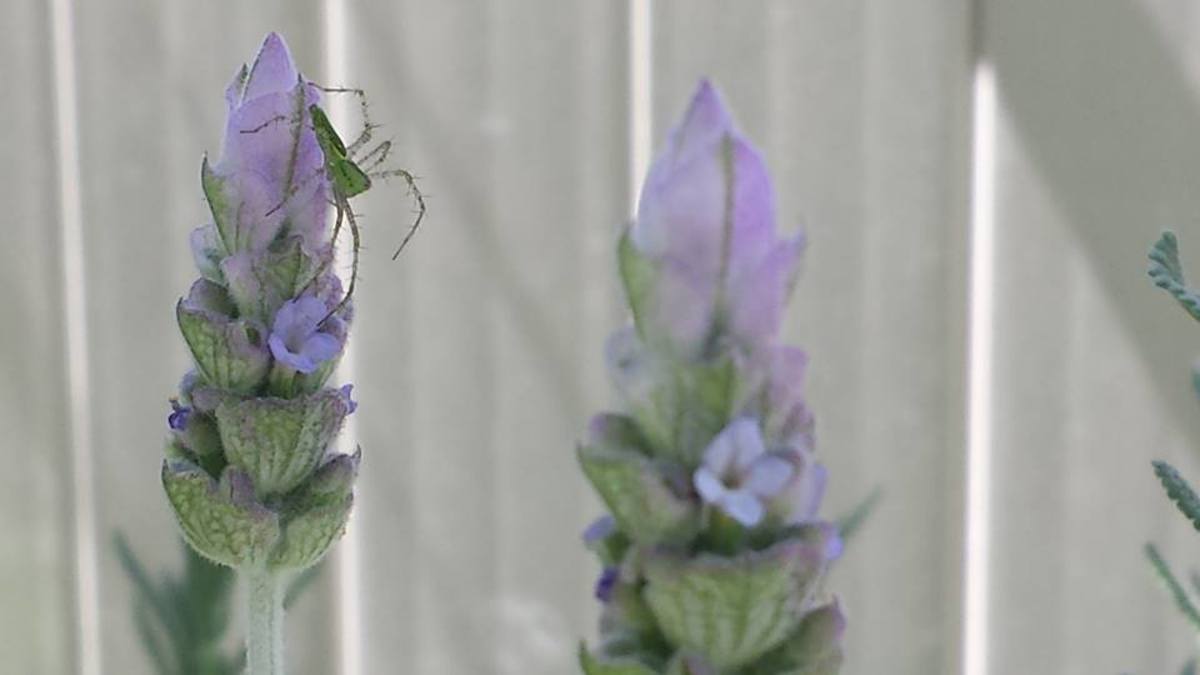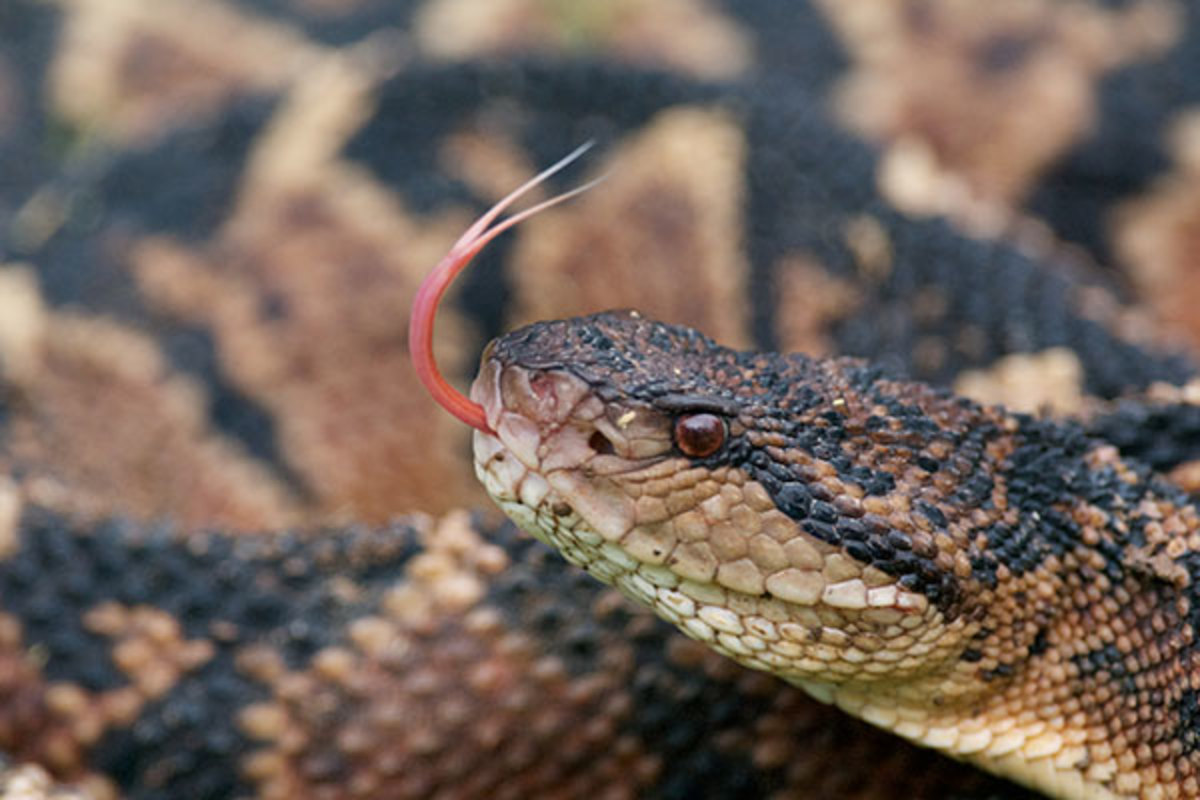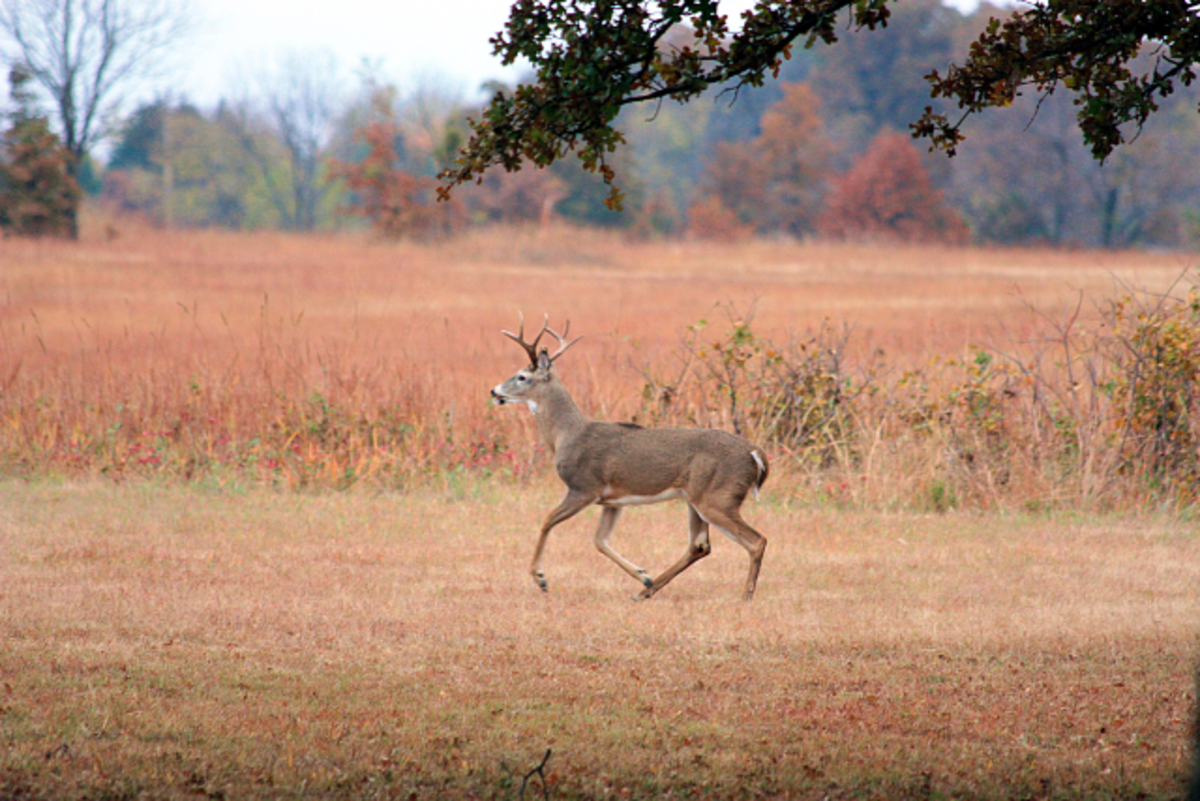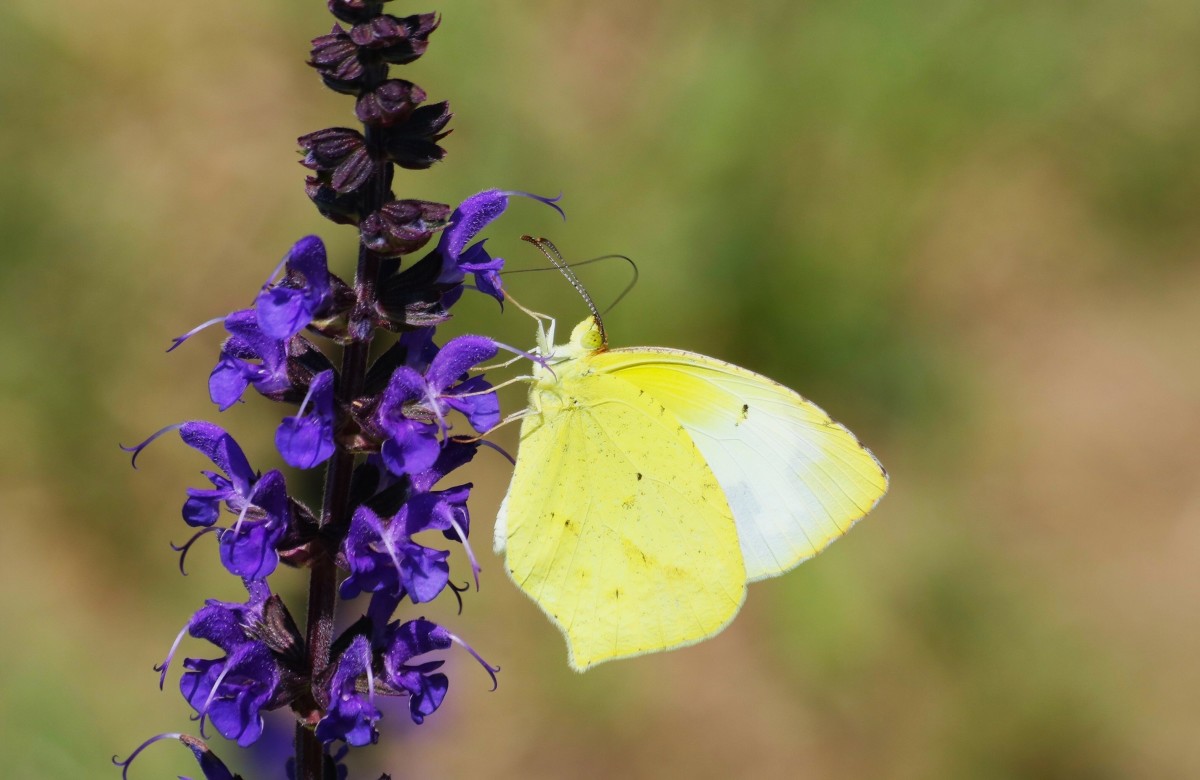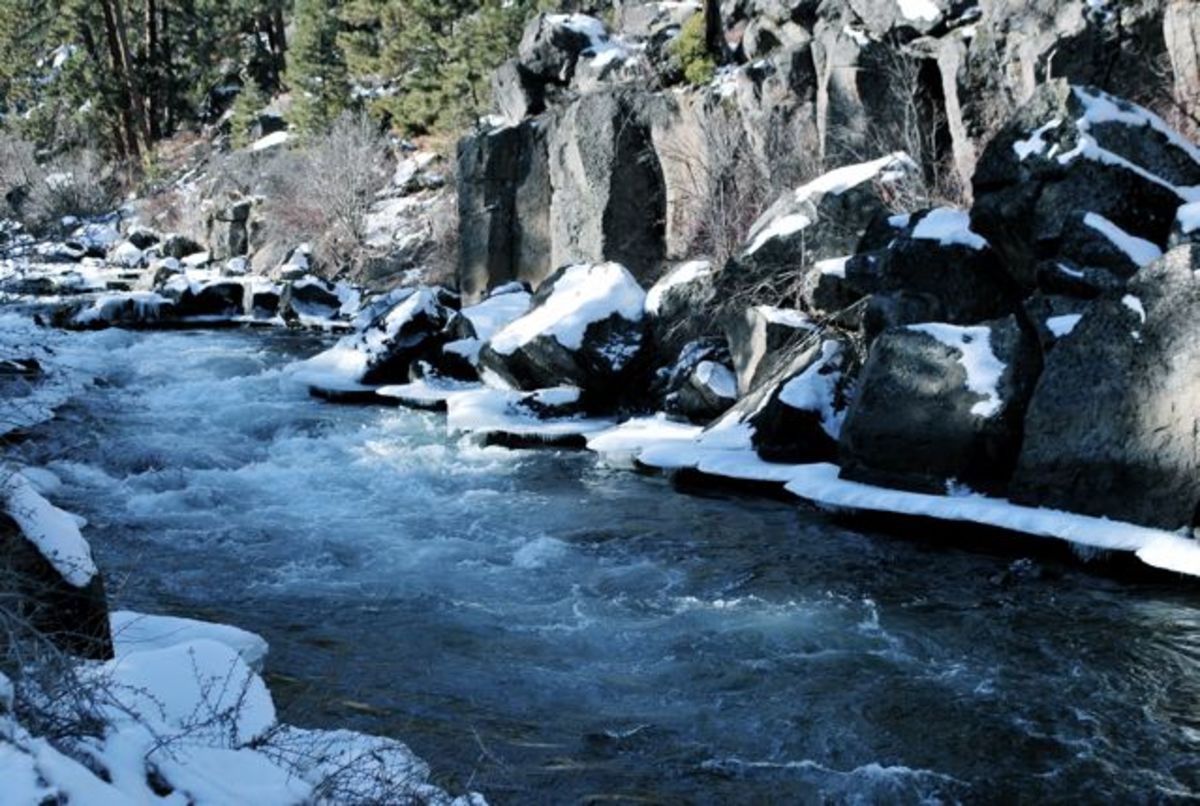Rimy Revelations, the Spider Web Revealed
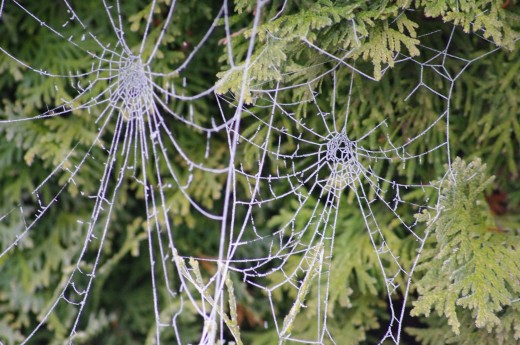
Yesterday I was walking my dog Kai past a neighbor’s hedgerow. It was the same hedgerow I’d walked past almost every day for years. But today it looked completely different. It stopped me in my tracks.
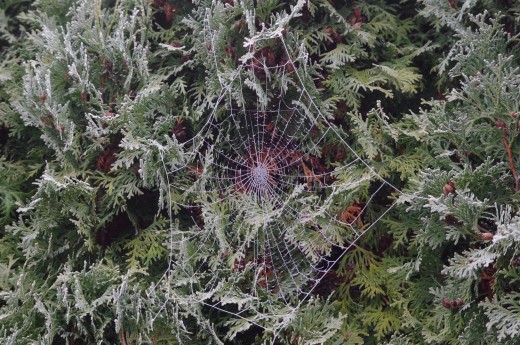
We’d had our first truly hard frost that morning and along this hedge you could see outlined in white what normally was invisible: dozens of spider webs coated in frost. It looked like miniature fishing nets had been strewn randomly up against the branches and they had stuck like Velcro.
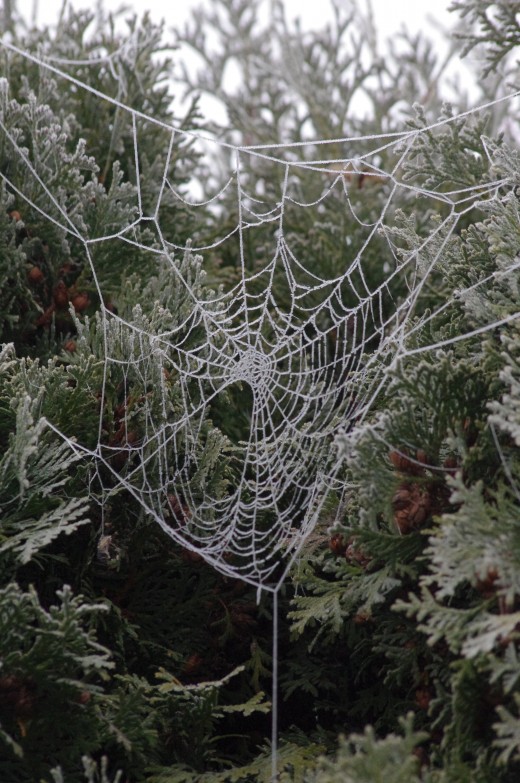
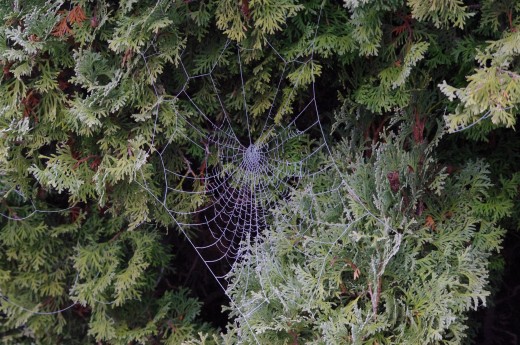
Or maybe someone had decorated the hedges with delicate origami snowflakes.
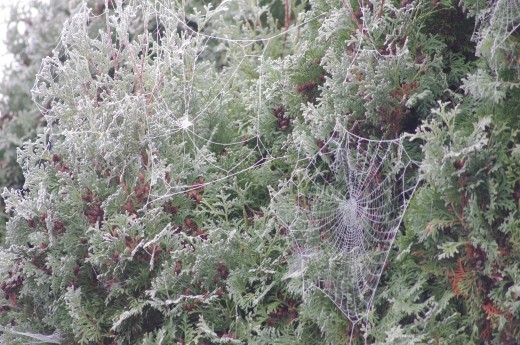

Against Kai’s objections, we raced back home to get my camera and returned so I could snap away, enchanted.
Spiders have evolved a talent for engineering with which similar, yet unrelated bugs, i.e. insects, cannot compete. They spew silk from their abdomens. They don’t create just one type of silk, but up to three different kinds. They make a sticky silk that traps and holds their prey in place. They also produce a non-sticky type of thread that they use to travel across their webs to approach their prey. This allows them to to either eat or bundle up their prey for safe-keeping and consumption at a later time. And for birthing and raising baby spiders, they make a different more secure kind of silk that is used to construct a fortress-like cocoon.
Spider webs are designed to be experienced and not seen, or there would be no purpose in building them. But under the right conditions they make themselves known. Most of us have probably walked through a web and become covered and entwined in its sticky threads. Take heart, for though It’s an unsettling experience -- especially because most of us don’t enjoy having a creepy-looking spider crawling on our person -- it may help to know that spiders are not usually in their webs, but carefully concealed outside of them in a place where they can wait and watch for a potential meal to become inextricably glued to their silky stickum. Resting one leg on the web allows them to feel the vibration when their potential lunch flies or gets blown into the web and tries desperately to free itself. It also makes them less conspicuous to their predators. Of course the European Cross Spider spends a great deal of time in the center of its web and there are plenty of those in the Willamette Valley.
These frosty engineering feats reminded me that I had taken photos during the summer of the invisible death traps when the sun or the dew had given away their presence.
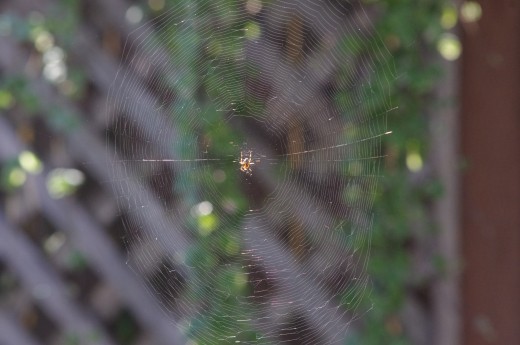
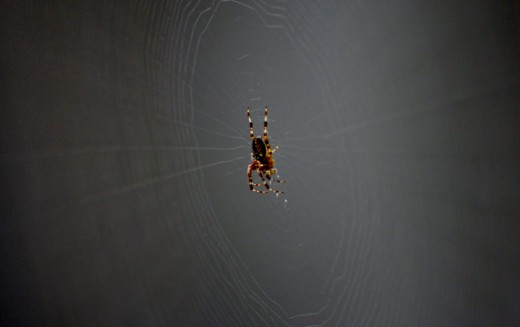
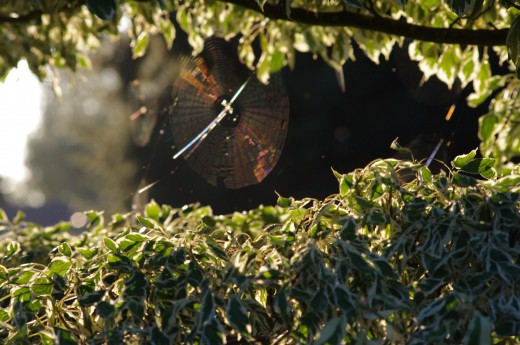
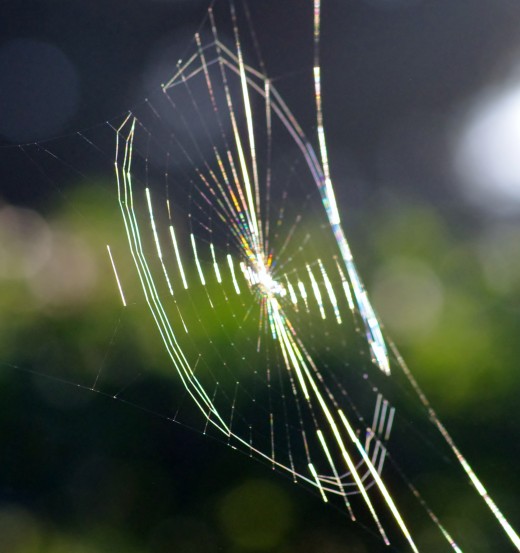
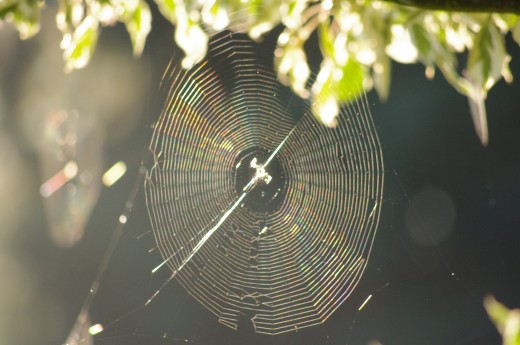
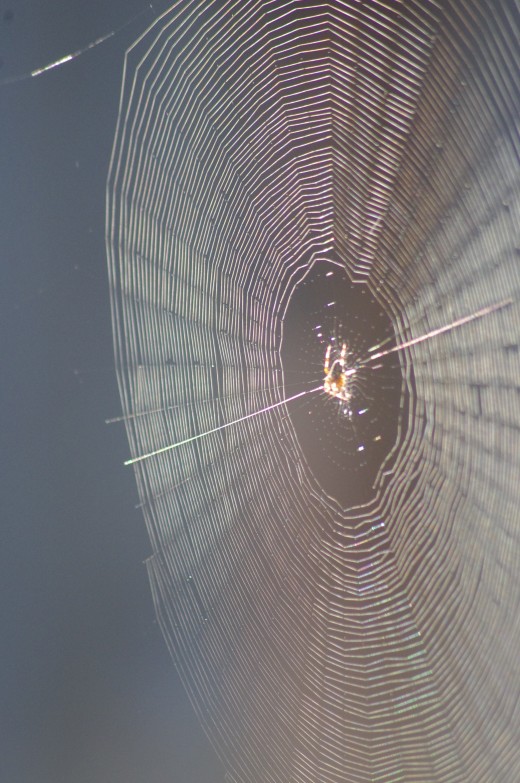
Webs are beautiful works of art designed never to be seen. It’s kind of a privilege when nature’s conditions allow us a glimpse.



